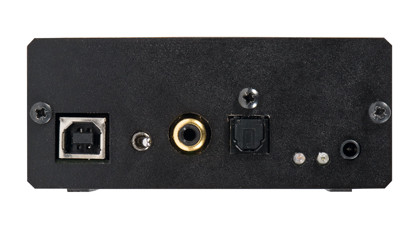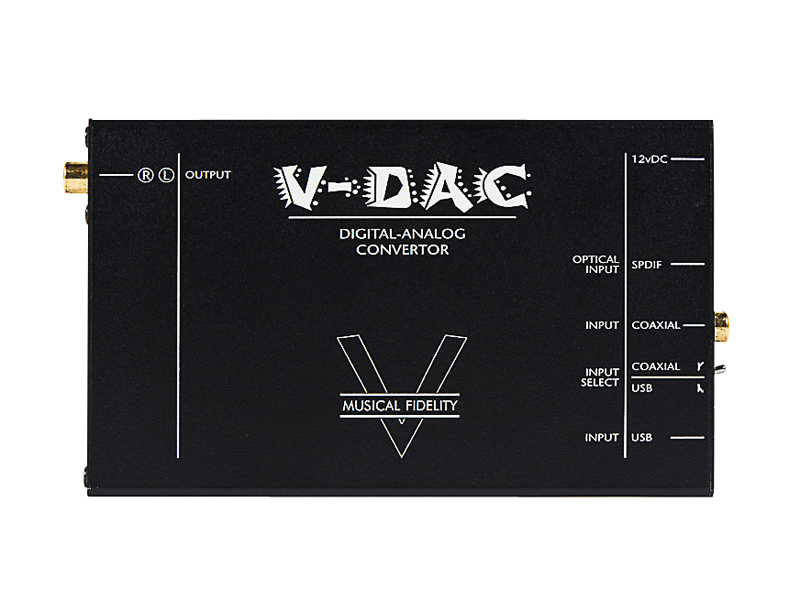TechRadar Verdict
All-in-all, this little digital converter box does a very good job of improving the quality of your digital music - and all for a bargain price
Pros
- +
Big presentation
- +
Good depth
Cons
- -
Bass has a little overhang
- -
Rhythm could be less clear some some higher-end models
Why you can trust TechRadar
Musical Fidelity is very much the child of its creator, Antony Michaelson, a charismatic individual who manages to be equally passionate about his high-end products (especially monster-powerful amplifiers, something of an MF speciality) and his budget components like this one, the V-DAC.
Why pay a fortune, he asks, for fancy audio kit when a tiny and inexpensive box like this contains all the important bits without any of the frills.
Well, the V-DAC certainly doesn't waste any money. The case is utterly basic, made of steel, but perfectly adequate to contain, protect and electrically screen the gubbins inside.
That said, we've two small issues to raise: first, the distribution of sockets on both ends of the unit is a little inconvenient in practice, and second, the mechanical mounting of some of those sockets is not the most robust, and we would advise care in connecting up so as not to break internal solder joints.
The V-DAC caters for all three of the usual digital inputs: USB and both electrical and optical S/PDIF, with a single unbalanced output. Between inputs and output are functional bits, which we quite agree are more typical of high-end stuff, including a sample rate converter and high grade DAC chip.
The output opamps are nothing fancy, but none the worse for that and have been seen in some quite upmarket kit. Passive components are likewise decent rather than show-off and the power supply is the usual 'wall wart' kind of thing – not universal voltage though.

Sound quality
Sign up for breaking news, reviews, opinion, top tech deals, and more.
Cheap it may be, but only in the best sense is it cheerful – at least, it seems to have put our panel listeners in a good humour for the duration of its stay in the test system. There was the odd question mark raised here and there, but the general tendency of the comments is very clearly in favour of the V-DAC's performance.
Above all, they kept mentioning the big presentation, even in the smallest-scale music. The last track of the programme was solo voice and piano, but even there the V-DAC managed to find a greater depth to the image.
Amusingly, one listener commented that the singer and pianist didn't always seem to be quite in agreement, which is, in fact, a very perceptive comment, as they weren't!
Obviously, it's the big stuff that will really benefit from this kind of presentation – the only possible drawback is if it's accompanied by a lack of precision, which is sometimes the case. Not here, though, and both Dark Side of the Moon and Rachmaninov's luxurious orchestration drew praise for the detail as well as the scope in the sound.
The one area that, perhaps, suffers a little in very dense music is the bass, which develops a little overhang, but still manages a rapid, precise attack. Dick Hyman's piano, a slightly bright Bösendorfer, received in some ways the best rendition of the group, with excellent clarity and pace and once again a large scale which suits the instrument – the largest piano in regular production in the world.
One listener commented that the rhythm seemed slightly less clear than in a couple of previous presentations, though that was the only negative comment on that aspect throughout the V-DAC's session.
Even the Penguin Café Orchestra, in a recording that's not outstanding, but which seems very revealing of kit prowess, revealed some of the best balance, pace and general excitement of the day.
Once again, we found the S/PDIF and USB inputs very similar sonically. We have to hand it to Mr Michaelson – this little unit does pretty much exactly what it says on the tin!
Follow TechRadar Reviews on Twitter: http://twitter.com/techradarreview
